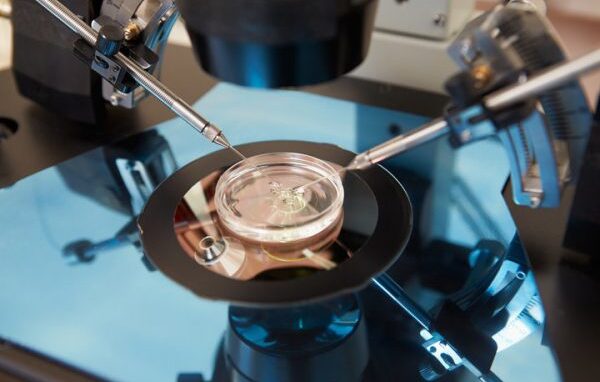The success of in vitro fertilization depends on many factors, one of which is sperm viability. A recent study by the University of Illinois Urbana-Champaign documents a new method for selecting viable sperm and extending their viability in the laboratory, thereby reducing one of the variables in the process.
How the Chances of Success in IVF Could be Improved
“The fallopian tube in women, or the oviduct, has the ability to extend the lifespan of sperm, which we have not been able to mimic in in vitro fertilization. In 2020, we discovered that complex sugars, called glycans, which are components of the fallopian tube, can bind, store and keep sperm alive,” said senior study author David Miller, a professor in the Department of Animal Sciences, which is part of the College of Agricultural, Consumer and Environmental Sciences at Illinois. Miller’s group worked with chemists to test hundreds of glycan in the fallopian tube for their ability to bind pig sperm, and settled on a glycan called sulfated Lewis X trisaccharide, or suLeX for further testing.
They focused on porcine sperm not only as a proof of concept for future human studies, but also because animal agriculture relies on IVF as well. In porcine IVF, multiple sperm often fertilize individual eggs, resulting in nonviable embryos. The hope in using glycans was that fewer sperm would swim freely to the eggs and fertilize them at the same time. The researchers attached suLeX to the bottom of culture dishes and then added sperm. The sperm had 30 minutes to adhere to the junctions before the researchers began adding eggs, with 0, 6, 12, or 24 hours in between. Adding eggs at later time points allowed the researchers to test the system to see if suLeX increased sperm lifespan. Essentially, they found that they could maintain or extend fertilization rates over time, thereby increasing the time window for successful IVF.
Glycan IVF Could Extend the Fertile Window of Sperm and Potentially Increase IVF Rates
At 0 hours, IVF efficiency (fertilized zygotes vs. total number of oocytes) was significantly higher (53%) for sperm initially treated with SuLeX than for a no-glycan control (36%) and two alternative “control” groups (each ~40%). The time delays resulted in a lower fertilization rate for all groups, but less so for SuLeX. In the control group without glycan, the fertilization rate was only 1% after 24 hours. With SuLeX, however, 12% of the oocytes were fertilized after 24 hours. The IVF set-up with SuLeX droplets also allowed the researchers to wash away free-swimming sperm before introducing the egg cells. “Because the sperm were firmly attached to the glycan compound, we were able to reduce the total number of sperm, which meant that in fewer cases did more than one sperm fertilize the egg cells,” Miller said.
The basic research could one day improve IVF success in both animals and humans. According to the researchers, this technology could potentially help make meat and milk production more efficient. The researchers make it clear that the specific glycans that bind human sperm have not yet been identified, but once they are, glycan IVF could help with timing discrepancies between egg maturity at retrieval and sperm viability in humans. Both eggs and sperm need to undergo a maturation phase before they are ready for fertilization, so timing is crucial. There is variability in the time it takes for sperm to complete their final major maturation step,” Miller said. Experts believe that glycan IVF could extend the fertile window of sperm and potentially increase IVF rates, but more testing is needed to verify this.





